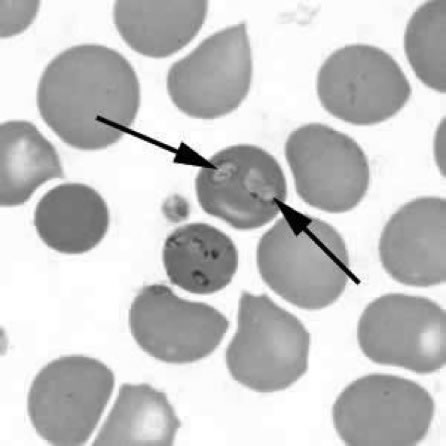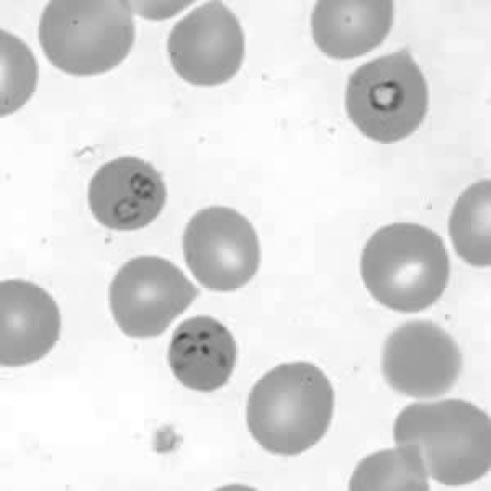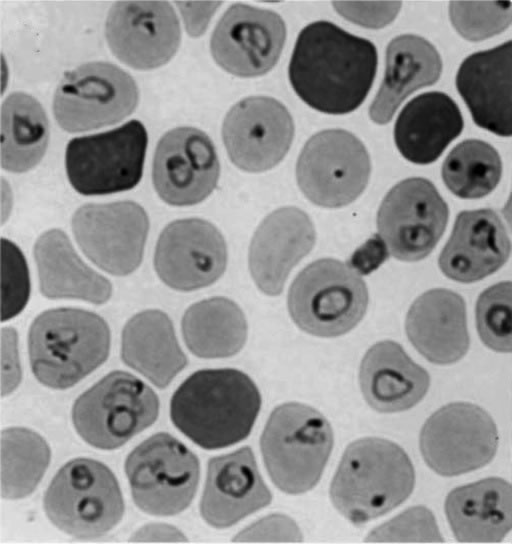|
Page 1, 2, 3, 4
Babesiosis is one of the most deadly tick infections on earth. It is not rare, a mere "coinfection," or "occasionally" present. It should always be checked in anyone with a history of a tick bite, possible Lyme disease, high suburban or rural exposure, or a transfusion, using specialty direct and indirect labs. Almost all direct testing is 95% inaccurate, with the exception of IGeneX, which detects Babesia approximately 25% of the time if you perform full testing of Babesia microti and Babesia duncani antibodies, PCRs, and a FISH test. This 25% is approximate and comes from 11 years of our own patients and our consult patients, who were tracked very closely on Babesia infections. Initial testing by over 100 physicians and our repeat testing yielded this percent in the absence of meaningful new exposures. Also, Babesia is routinely missed in slides by specialty laboratories.1
Babesia can cause crippling fatigue and migraines. Weight loss or gain is routine, but so is disability from an additional 50 possible symptoms which were carefully derived from a decade of our research and presented earlier in our Checklist book.2-4 (See Figures 1–3 and note the Babesia inside the red blood cells.) Despite these intimidating images, some patients have no symptoms. For others, their first or most serious symptom can be death by stroke, heart attack, blood clots in the legs or the lungs, or cancer.
Figure 1: Babesia lives inside red blood cells. This routine Giemsa-stained blood smear is MO-1, which means that the first patient lived in Missouri. It was fatal.

Figure 2: Babesia lives inside red blood cells. This routine Giemsa-stained blood smear is WA-1, renamed duncani.

Figure 3: A wide range of Babesia single-celled infections inside the critical red blood cell – the cell carrying oxygen to all of the body's cells. The density of infected cells shown here is not routine. What is routine is to examine a blood sample slide for 3 minutes as the CDC suggests, and see no infected cells.

Babesiosis, according to the CDC, can cause low and unstable blood pressure, severe hemolytic anemia (hemolysis), a very low platelet count (thrombocytopenia), disseminated intravascular coagulation (DIC, or consumptive coagulopathy), which can lead to the above-mentioned blood clots and bleeding, malfunction of vital organs (such as the kidneys, lungs, and liver), and death.5 In 2001, Mylonakis was already warning of major risk of heart attacks, renal failure, and other catastrophic disease states from babesiosis.6
We first became concerned with Babesia, as an infection that affects clotting, when we noticed patients clotting very fast when cut by shaving accidents or blood draws. Very high D-Dimer and thrombin-antithrombin complex formation (TAT) blood levels were found in our Babesia patients, as well as research in humans and dogs.7-9 Our worry about death from clots in humans was further supported when some patients required prescription blood thinners to prevent a clotting death.
Further, another issue emerged also related to clotting. We were consulted on patients who had strokes. The trouble was that they would take Coumadin or other medicines to keep their blood at a constant level of "thinness" to prevent another stroke, but their clot measurement labs were too variable for optimal clot prevention. All of these patients were eventually found to have Babesia and other tick infections, and their unstable blood thinning or clot risk labs, the PT, aPTT, and INR, changed due to a Babesia infection.
Heart and brain infarcts are the leading causes of death in adults. Babesia increases the incidence of these infarcts by an unknown percentage. The chemical changes that Babesia causes in the body may add to this problem. This is partly discussed in our book, Babesia 2009 Update.10 Babesia occasionally increases red blood cell size (MCV) so that red blood cells that normally measure 8 microns often can barely pass through 10 to 20 miles of human capillaries.
Babesia's "sibling," malaria, another single-celled red blood cell parasite, routinely causes brain infarcts, causes white blood cell adhesion, and impairs venous blood flow causing pressure, edema, and other coagulation disasters.11,12 No single test should ever be used to rule out a clotting risk from Babesia.
Another top cause of death for adults is cancer. We believe that Babesia increases the rate of some cancers. The amount of natural killer cells with an outer CD57 marker can decrease with the presence of Lyme disease, but Babesia, when it is killed, can decrease the levels of this type of cancer killer cell even more.13 For example, in proprietary research and in our physician patients who were only given Babesia medications, the levels of cancer killer cells with CD57 decrease very rapidly with effective Babesia killing. Antimalaria medications used alone may also acutely decrease the levels of CD8 markers by Babesia death and presence of Lyme in the body.
Another common cancer issue is the lack of testing for Babesia in most hemolytic anemia workups – the red blood cells are being destroyed, and hematologists seem to have no awareness that this may not be cancer but Babesia, even when told that it is Babesia related.
Let me use a routine article to show this error. Nackos reports on a man who was admitted to a hospital weak and disoriented.14 His complete blood count (CBC) revealed mild anemia (hemoglobin 11 g/dL) and low platelets. His level of platelets had been normal 3 weeks earlier. My first appeal is that Babesia does not replicate very quickly. Nackos et al. seem to assume that Babesia replicates like weeds because he seems to think all of the patient's Babesia load came from a single walk in the "country grass." We have serial Babesia smears examined every 2 to 4 months which show otherwise, proving that Babesia is very slow growing.
However, he is correct to consider a new additional bite is a trigger to acute illness and decreased function. The signs and symptoms were new in this poor man, but he already likely had Babesia present in his blood for years.
Sometimes someone has a tick-infection trigger event such as a car accident, flu, another tick bite, a surgery, an airplane trip, a divorce, or the death of a close family member, which may lead to the sudden emergence of Babesia symptoms. However, the patient may have had Babesia for 20 years. Occasionally, there is no particular trigger.
In this case, the patient was possibly bitten again "in country grass a few weeks before his symptoms started." The author, Nackos, might be confusing a trigger event with the onset of infection. I suspect that the patient had walked in exposed areas hundreds of days. My position is – and the evidence indicates – that this was not his first tick bite. One final point: it is theoretically possible that Babesia may create symptoms like a high mysterious fever on a first bite, but we believe that this is not the norm. We believe that the norm is that initial tick bites are experienced as trivial or merely a brief cold or flu, and after years of reproduction, serious symptoms start.
Further, Nackos's patient showed evidence of shredding red blood cells. In response to the destruction of mature red blood cells, young red blood cells come out of the bone marrow quickly. These are called reticulocytes, and his count was 5.56% (0.5% to 2.17% normal range). Lactate dehydrogenase was also very high at 540 IU/L (98 to 192 IU/L normal range), consistent with the deadly excess destruction of red blood cells called hemolysis. His peripheral blood smear showed many parasites that looked like Babesia.
It is highly unusual for hospital clinicians to consider Babesia. Most clinicians do not consider Babesiawhen a patient presents with these symptoms – they are often more cancer oriented in their thinking when hemoglobin or white blood cell levels decrease. They can actually initiate chemotherapy for a supposed cancer.
Page 1, 2, 3, 4
|
![]()
![]()
![]()







